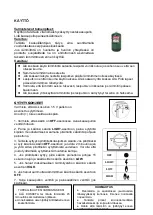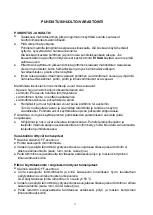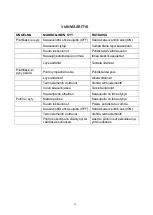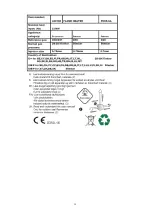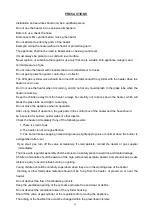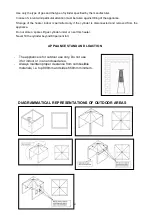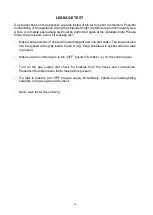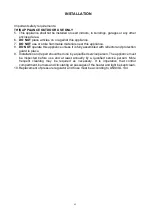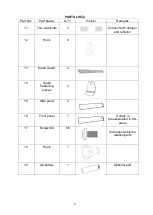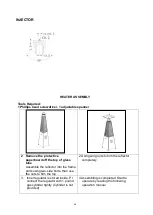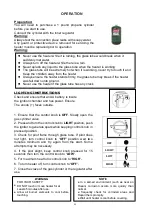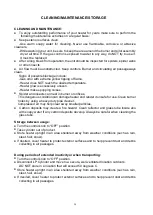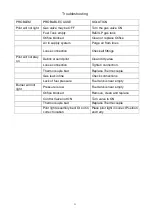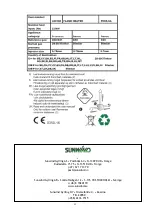
50
CLEANING/MAINTENANCE/STORAGE
CLEANING AND MAINTENANCE:
● To enjoy outstanding performance of your heater for years make sure to perform the
following maintenance activities on a regular basis:
● Keep exterior surfaces clean.
-Use warm soapy water for cleaning. Never use flammable, corrosive or abrasive
cleaners.
-While washing your unit, be sure to keep the area around the burner and pilot assembly
dry at all time. If the gas control is exposed to water in any way, do NOT try to use it.
It must be replaced.
● After a long break from operation, the unit should be inspected for spiders, spider webs
or other insects.
● Air flow must be unobstructed. Keep controls. Burner and circulating air passageways
clean.
Signs of possible blockage include:
-Gas odor with extreme yellow tipping of flame.
-Heater does NOT reach the desired temperature.
-Heater glow is excessively uneven.
-Heater makes popping noises.
● Spider and insects can nest in burner or orifices.
This dangerous condition can damage heater and render it unsafe for use. Clean burner
holes by using a heavy-duty pipe cleaner.
Compressed air may help clear away smaller particles.
● Carbon deposits may create a fire hazard. Clean reflector and glass tube inside abo
with soapy water if any carbon deposits develop. Always be careful when cleaning the
glass tube.
Storage between usage:
● Turn the control knob to “OFF” position.
● Take cylinder out of product.
● Store heater upright in an area sheltered away from weather conditions (such as rain,
sleet, hail, snow).
● if desired, cover heater to protect exterior surfaces and to help prevent dust and debris
collecting in air passages.
During periods of extended inactivity or when transporting:
● Turn the control knob to “OFF” position.
● Disconnect LP Cylinder and move to a secure, well-ventilated location outdoors.
DO NOT store in a location that will exceed 50 degrees C.
● Store heater upright in an area sheltered away from weather conditions (such as rain,
sleet, hail, snow).
● If desired, cover heater to protect exterior surfaces and to help prevent dust and debris
collecting in air passages.

